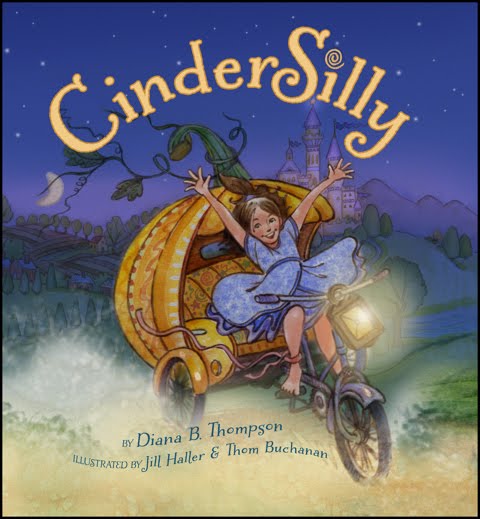 |
| The Silence that Lives in Houses by Henri Matisse |
Search This Blog
Friday, December 28, 2012
The Silence in Cinderella’s House
Monday, December 17, 2012
The Power of Silly
The Power of Silly
by, Diana B. Thompson
*(http://www.bl.uk/learning/langlit/dic/oed/silly/silly.html)
Monday, December 10, 2012
Finding the Fun #2
Finding the Fun #2
by, Diana B. Thompson
*Photo credit: "Stuck in the airport, might as well jump" ~
Monday, December 3, 2012
Finding the fun #1
Finding the fun #1
by, Diana B. Thompson
Photo Credit: http://www.readingrosie.com/2010_04_01_archive.html (walkway at the Jubilee Gallery in Tennessee)
Saturday, December 1, 2012
How the CinderSilly Movement Began
When CinderSilly Started
by, Diana B. Thompson
When my daughter was little I watched her and her friends play princess games for hours. Though she had never seen a single animated princess movie in our home, she knew them all. She pretended to be each and every one. Despite my own commitment to fill her princess perceptions with empowering stories, the role playing games were anything but liberated. When I asked what princesses do, I was woefully informed: ‘They sweep, they dance, they wait to marry a prince.” I knew then I could not battle the cultural saturation of the princess role model. It was my job to redefine it. So, the CinderSilly movement began.
Thursday, November 15, 2012
What Makes CinderSilly Different?
What Makes CinderSilly Different?
by, Diana B. Thompson
CinderSilly is no ordinary fairy tale
Thousands of books and movies tell the same old Cinderella story.
It seems the main character is always a victim until something magical happens to reveal inner beauty and a kind heart. The ultimate reward is marriage to royalty.
CinderSilly is different. This Cinderella is never a victim. The stepmom is not evil, but instead misguided with a defeating life view. When the money runs out, Stepmom believes that life is a chore, and Cinderella believes that life is what you make it. To prove her point, the stepmother sends Cinderella to do chores. Cinderella vows to make chores fun. With each new challenge, she brings an imaginative spirit. Her stepsisters tease her with the nickname CinderSilly, but she responds each time in a way that regains her power. CinderSilly is a resourceful girl who finds magic in her ability to solve problems. She stays true to herself and in the process brings new life to those around her…except of course, for the stepmother. She will always believe life is a chore. CinderSilly is a child who lives each moment to the fullest. Her reward? 'To live HAPPIER ever after.'
The beautiful picture book is filled with invaluable life lessons delivered in a playful way:
- Your attitude affects your experience
- Creativity is an invaluable tool to solve problems
- Good natured responses are great tools for teasing
- When you are true to yourself, you decide what is right for you
- It's important to keep promises
- Misery loves company, but you have a choice in whether to participate
- If you expect life to be hard, you might make things harder than they need to be
- When you change what you think and say, it affects what you feel and do
- You may not have control of your circumstances, but you can always control how you respond
- A positive attitude can result in living happier ever after
Victim Danger
In the traditional story, Cinderella is powerless. She is a servant at the mercy of a cruel step family. In some versions, she is physically and mentally attacked, then locked away. Cinderella is a victim.
CinderSilly is different. Though her stepmother gives her challenging chores, CinderSilly looks for opportunities to change her experience and finds creative solutions. CinderSilly is not a victim. She is a resourceful girl who takes charge of her own destiny. She goes through the motions of completing the tasks, but does it on her own terms. Her step family is demanding, but far less than abusive.
The problem with the traditional model is that it can glamorize the helpless role. It can convey the message that suffering in sweet silence will produce great reward. It’s impossible to know how a young listener is interpreting the Cinderella character or of if she is identifying with her. The traditional story may also glorify the role of the rescuer for boys. If boys imagine the ‘prince in shining armor’ as the ideal, he could subconsciously strive to fulfill those shoes. It can create an unrealistic task and unhealthy relationship cycle between victim and rescuer.
For a brief moment, CinderSilly considers assuming the role of a victim, while waiting for magic to rescue her. When she rejects the role, she is again empowered and moves to action. CinderSilly offers children an alternative to the traditional tale with positive and proactive role models. There is no victim or rescuer here, just good clean fun.
Subscribe to:
Posts (Atom)





